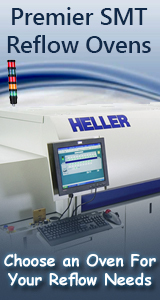Printed Circuit Board Assembly & PCB Design Forum
SMT electronics assembly manufacturing forum.
- SMTnet
- »
- Electronics Forum
- »
- SMD Moisture Sensitive Devices - Baking using vacuum-bake oven - seeking clarification
SMD Moisture Sensitive Devices - Baking using vacuum-bake oven - seeking clarification
Views: 2077
![]() Hello,
I have searched the forums for this specific topic, b...
- Oct 31, 2019
by
JohnCe
Hello,
I have searched the forums for this specific topic, b...
- Oct 31, 2019
by
JohnCe
![]()
![]() SEE ABOVE
...
- Oct 31, 2019
by
JohnCe
SEE ABOVE
...
- Oct 31, 2019
by
JohnCe
![]()
![]()
![]() Sorry I can't really answer any of your questions, but I'm c...
- Oct 31, 2019
by
Steve Thomas
Sorry I can't really answer any of your questions, but I'm c...
- Oct 31, 2019
by
Steve Thomas
![]()
![]()
![]() At this point, I do not plan to back-fill with nitrogen. I ...
- Nov 01, 2019
by
JohnCe
At this point, I do not plan to back-fill with nitrogen. I ...
- Nov 01, 2019
by
JohnCe
![]()
- SMTnet
- »
- Electronics Forum
- »
- SMD Moisture Sensitive Devices - Baking using vacuum-bake oven - seeking clarification







